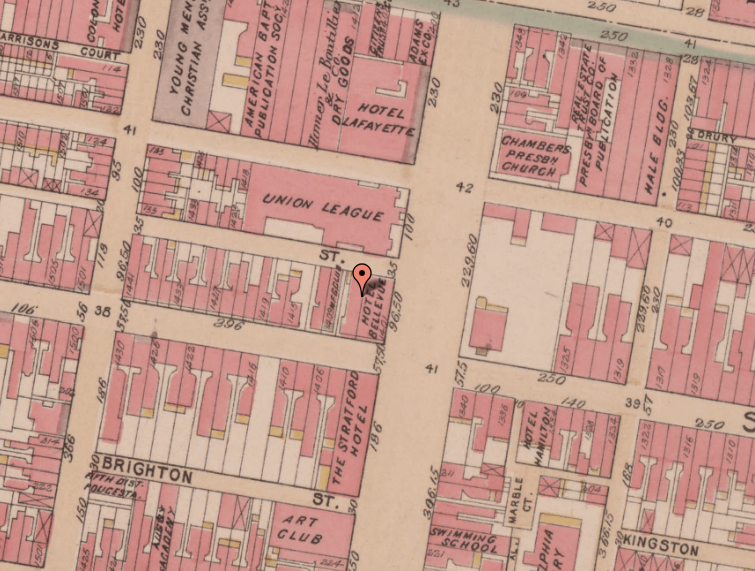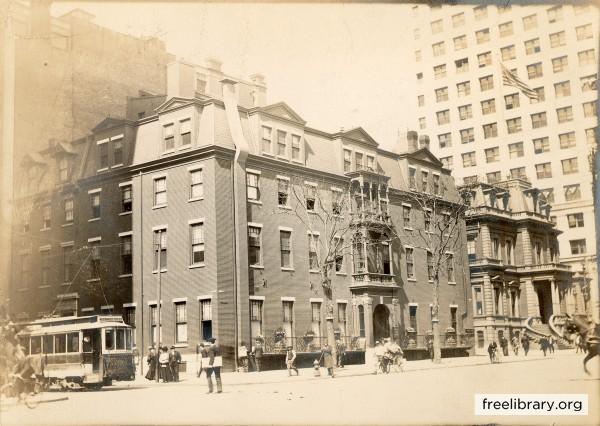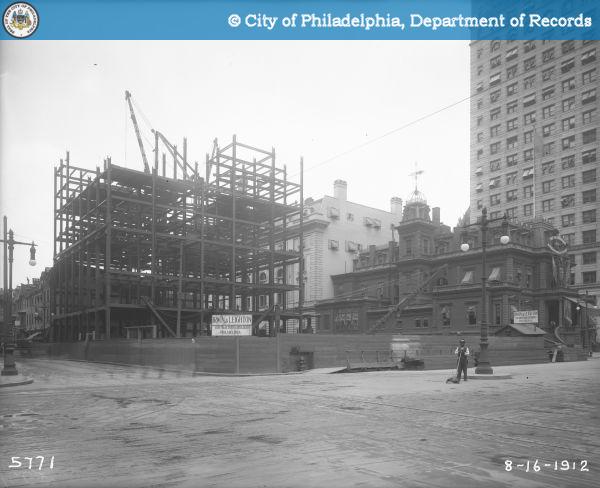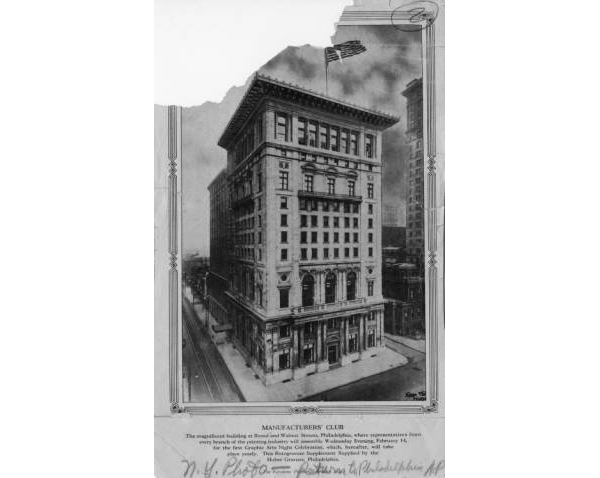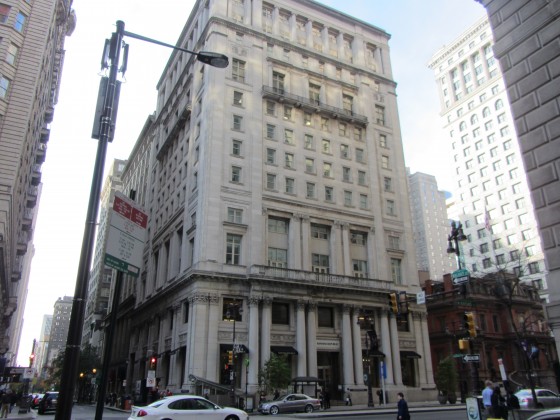The Union League building at the Southwest corner of Broad and Sansom Streets is one of Philadelphia’s stateliest and most historically significant landmarks. However, the ten-story building that casts its shadow over the French Renaissance style structure carries its own historical narrative. Opening its doors in 1882, the building just next door was the original location of the Hotel Bellevue. The Bellevue is shown here below in an image taken from G.W. Bromley’s 1895 Philadelphia Atlas.
Listed at 1401 Walnut St., the original Bellevue building was modest in scale. The 1899 photo here below, taken from The Free Library of Philadelphia, shows the hotel standing shoulder to shoulder with the Union League.
The Bellevue quickly became, according to The Free Library, “a meeting place for socialites and fashionable clubs.” Its popularity ultimately eclipsed its size. Thus, reports the Free Library, the Bellevue merged with the far grander Stratford just across Walnut. In 1904, the Bellevue hosted an elaborate closing celebration only 19 hours prior to the elaborate opening celebration at the new Bellevue-Stratford. The original Bellevue was demolished shortly thereafter. The 1912 photo here below, taken from the Philadelphia Department of Records, shows the early stages of construction for a new building.
The new building would become home to Philadelphia’s Manufacturers and Bankers’ Club, an organization where ethnically and economically homogenous citizens gathered in large, well-appointed rooms to discuss matters of great importance. The building is shown here in 1923 in a photo borrowed from the Temple University Libraries.
According to Philaphilia, the Club moved to Fort Washington in 1925 and renamed itself the Manufacturer’s Golf Club just a few years later. And it still exists today.
Some time after the club vacated the building, the top nine floors were converted to office space and condominiums. The ground floor is particularly recognizable to Avenue of the Arts frequenters for its sprawling Banana Republic.
–David Tomar


